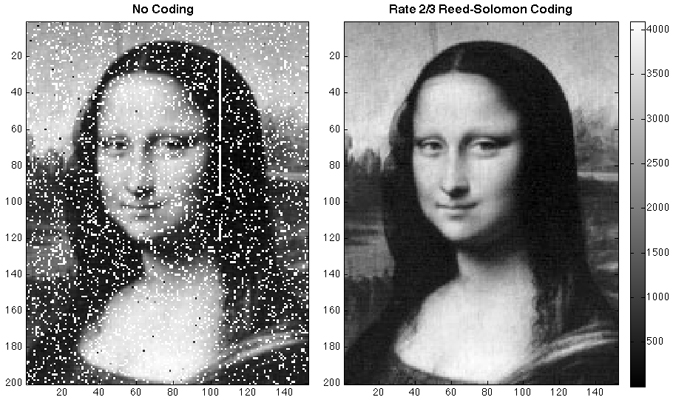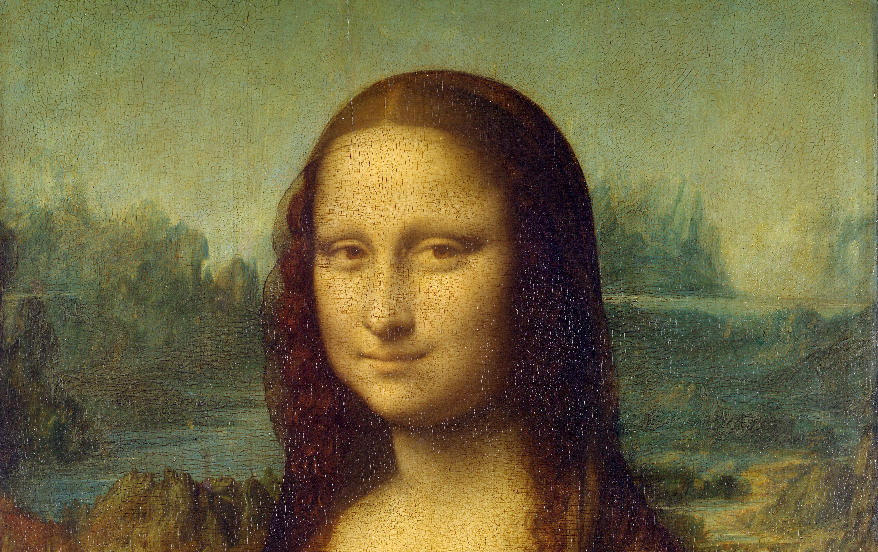“This is the first time anyone has achieved one-way laser communication at planetary distances.”
That awesome sentence was said by David Smith from MIT, who is the Principal Investigator for NASA’s Lunar Reconnaissance Orbiter (LRO), which is currently, as its name suggests, in orbit over the Moon.
He said it after his team at NASA managed to beam a digital copy of the Mona Lisa (or the Moona Lisa, we we’re calling it) 240,000 miles (386,243 Km) from Earth to the Orbiter using a massive laser located on Earth.
The reason why NASA decided to beam a copy of the 500 year old Renaissance painting into space was to demonstrate that it could actually be done. Currently NASA, and other space agencies and private organisations, mostly communicate with their satellites using radio waves. But this can be a slow process (just ask the Mars Rover) so NASA is testing if lasers can be used as a reliable alternative.
 To conduct the test NASA took a digital image of the Mona Lisa and converted it into a 152 pixel wide and 200 pixel high monochromatic copy (about the same size and look as the image of the right). Then using its Next Generation Satellite Laser Ranging (NGSLR) station at NASA’s Goddard Space Flight Center it beamed the image to the LRO. Even more impressively NASA sent the image to the Moon by “piggybacking” it on the mission critical laser signal which it uses to track the orbiter.
To conduct the test NASA took a digital image of the Mona Lisa and converted it into a 152 pixel wide and 200 pixel high monochromatic copy (about the same size and look as the image of the right). Then using its Next Generation Satellite Laser Ranging (NGSLR) station at NASA’s Goddard Space Flight Center it beamed the image to the LRO. Even more impressively NASA sent the image to the Moon by “piggybacking” it on the mission critical laser signal which it uses to track the orbiter.
The LRO then sent its copy of the image back to Earth to prove to scientists on the ground that the technique worked.
Even though the image was quite small, this is an impressive feat by NASA and one that they say could change how we manage and operate satellites far beyond Earth’s orbit.
MIT’s David Smith explains, “In the near future, this type of simple laser communication might serve as a backup for the radio communication that satellites use. In the more distant future, it may allow communication at higher data rates than present radio links can provide.”
While the system successfully beamed and then returned the image over 240,000 miles (386,243 Km) it didn’t return a perfect copy of the painting. NASA reports that the copy of the painting it received back from the Lunar satellite contained a number of errors.

NASA’s copy of the Mona Lisa, returned from the Moon. NASA Goddard scientists transmitted an image of the Mona Lisa from Earth to the Lunar Reconnaissance Orbiter at the moon by piggybacking on laser pulses that routinely track the spacecraft. Credit: NASA’s Goddard Space Flight Center.
These errors were caused by the Earth’s atmosphere and weren’t unexpected by NASA or MIT, so they had a surprisingly old fashioned fix ready. Using a technique called Reed-Solomon error correction, which was originally developed in the 1960s and only commercially used since the invention of the CD in the 1980s, NASA was able to remove errors from the image.
NASA says that it will be able to use this test to develop more advanced space communication technologies, which could be used to improve communications between Earth and deep-space spacecraft.











